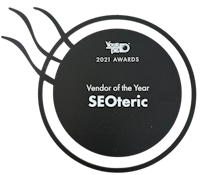US Search Ad Revenues From 2024: Forecast and Market Trends
US search ad revenues are expected to continue growing in 2025, driven by evolving consumer behaviors and advancements in digital advertising platforms. According to the IAB Internet Advertising Revenue Report, search advertising is projected to exceed $102.9 billion, reflecting a significant increase of $14.1 billion from the previous year. This growth highlights search’s dominant role within digital marketing budgets, outperforming other formats in return on investment and measurable impact.

Market Growth and Revenue Projections
In 2024, search ad revenues reached $102.9 billion, contributing significantly to the overall digital advertising revenue of $258.6 billion—a $14.1 billion increase from the previous year. Paid search holds nearly 40 percent of the digital ad market, with a growth rate three times higher than in 2023, signaling renewed advertiser confidence in its ability to deliver intent-driven traffic with measurable outcomes.
Other digital formats such as social media ads ($88.8 billion) and video advertising ($62.1 billion) also experienced substantial growth, despite economic pressures like inflation and workforce reductions. Major events like the presidential election and the Olympics further stimulated advertising demand, amplifying market momentum.
Drivers of Growth
Key factors fueling search ad revenue growth include:
- Refined Targeting Technologies: Enhanced precision in reaching audiences through improved data and AI integration.
- Artificial Intelligence and Machine Learning: These tools improve prediction of user intent and personalize ad delivery.
- Mobile Search Expansion: Increasing reliance on smartphones for immediate information and purchasing decisions requires mobile-optimized campaigns.
These developments create new opportunities for advertisers to connect with consumers more effectively and demand a focus on relevance and timely ad delivery.
Market Dynamics and Platform Landscape
Google and Microsoft continue to dominate the search ad space, capturing the largest market share. However, emerging platforms and niche search engines are gaining attention by offering specialized targeting options and access to alternative audience segments. This diversification presents opportunities and challenges for advertisers, who must carefully allocate budgets to maximize campaign effectiveness without diluting impact.
Strategic Implications for Marketers
To capitalize on these trends, marketers should:
- Adapt strategies to evolving consumer behaviors and technological advancements.
- Emphasize measurement and attribution using advanced models that capture the full customer journey across devices and channels.
- Leverage AI-driven analytics to identify high-impact touchpoints and optimize campaign performance.
- Prioritize mobile-first experiences to align with shifting user preferences.
- Continuously test and refine creative messaging and targeting parameters to maintain relevance.
Focusing on these areas will help brands maximize return on ad spend and navigate the increasingly complex digital advertising environment.
Frequently Asked Questions
What drives sustained growth in search advertising despite economic uncertainties?
Growth is supported by improved targeting precision and AI integration, which reduce wasted spend and enhance campaign efficiency. Mobile search also plays a significant role as users increasingly seek immediate answers on smartphones.
Can emerging search engines disrupt the dominance of Google and Microsoft?
While Google and Microsoft maintain the largest share, smaller platforms offer specialized targeting and niche audiences. These alternatives allow for media mix diversification but require careful evaluation to align with campaign goals.
How should marketers measure search ad campaign success amid growing complexity?
Advanced attribution models beyond last-click metrics are essential to capture the full customer journey. AI-driven analytics help identify key conversion touchpoints, enabling informed budget allocation and strategy refinement.
Search advertising in the US is set to maintain strong growth in 2024, supported by AI advancements, improved targeting, and mobile search expansion. With revenues surpassing $100 billion and search holding the largest share of digital ad spend, marketers must refine strategies to leverage these opportunities through technology adoption, mobile optimization, and precise measurement. Balancing innovation with data-driven decision-making will be essential to maximize return on investment as the market evolves.
For more details, see the original article on Search Engine Land. As noted by the article’s author, “Search advertising revenue grew by nearly 16% year-over-year, with quarterly growth rates showing consistency,” underscoring the robust momentum in this sector.













.png)

